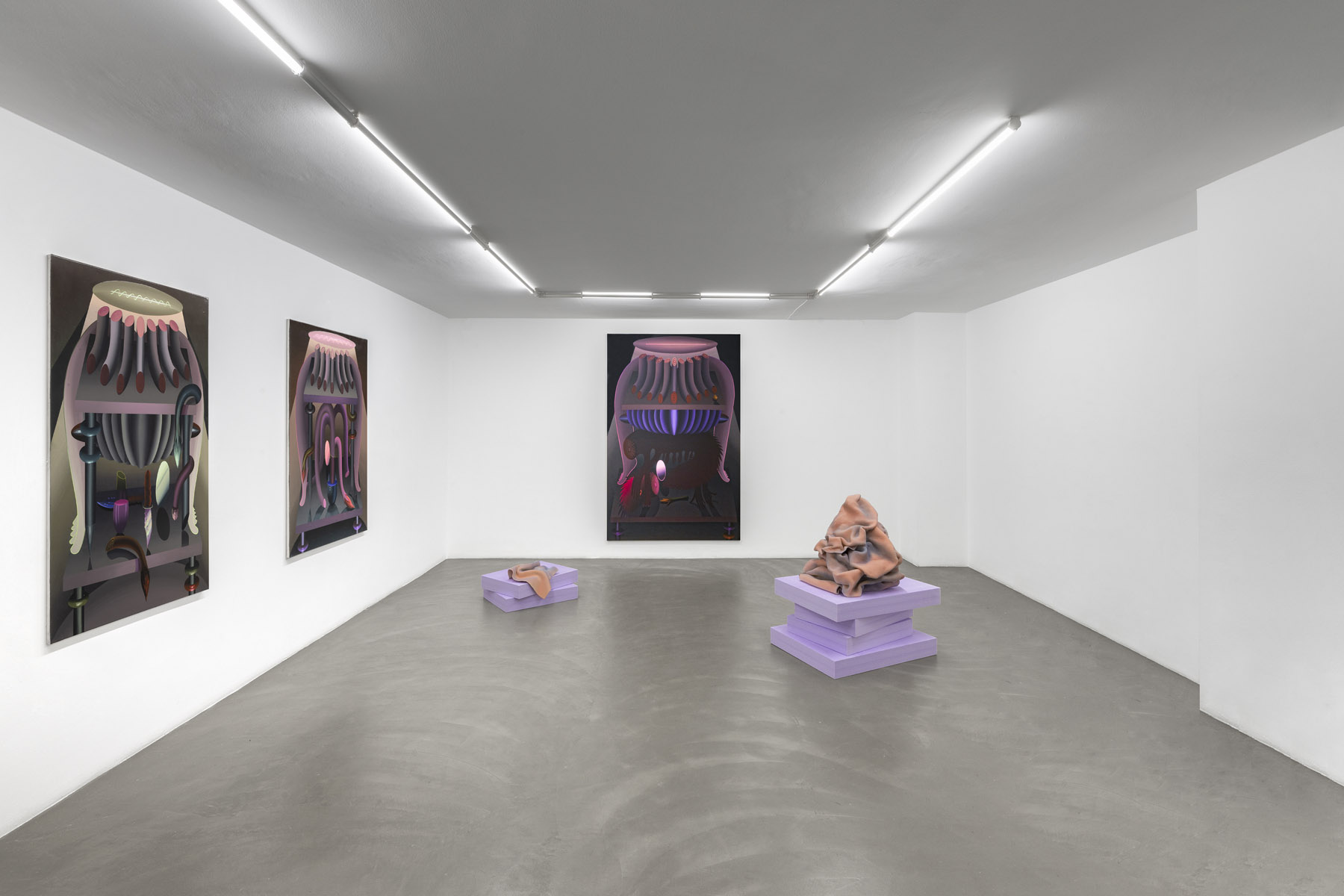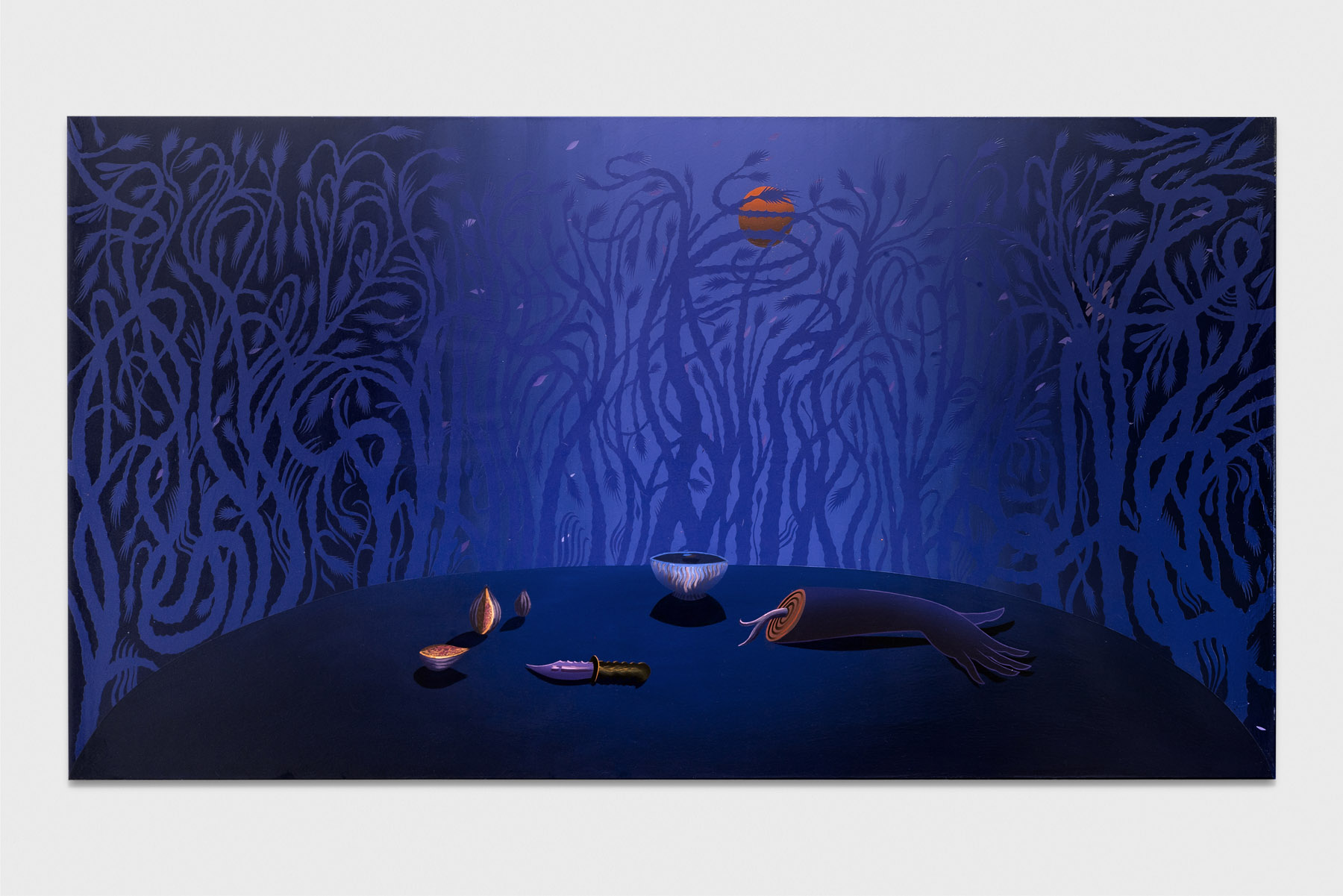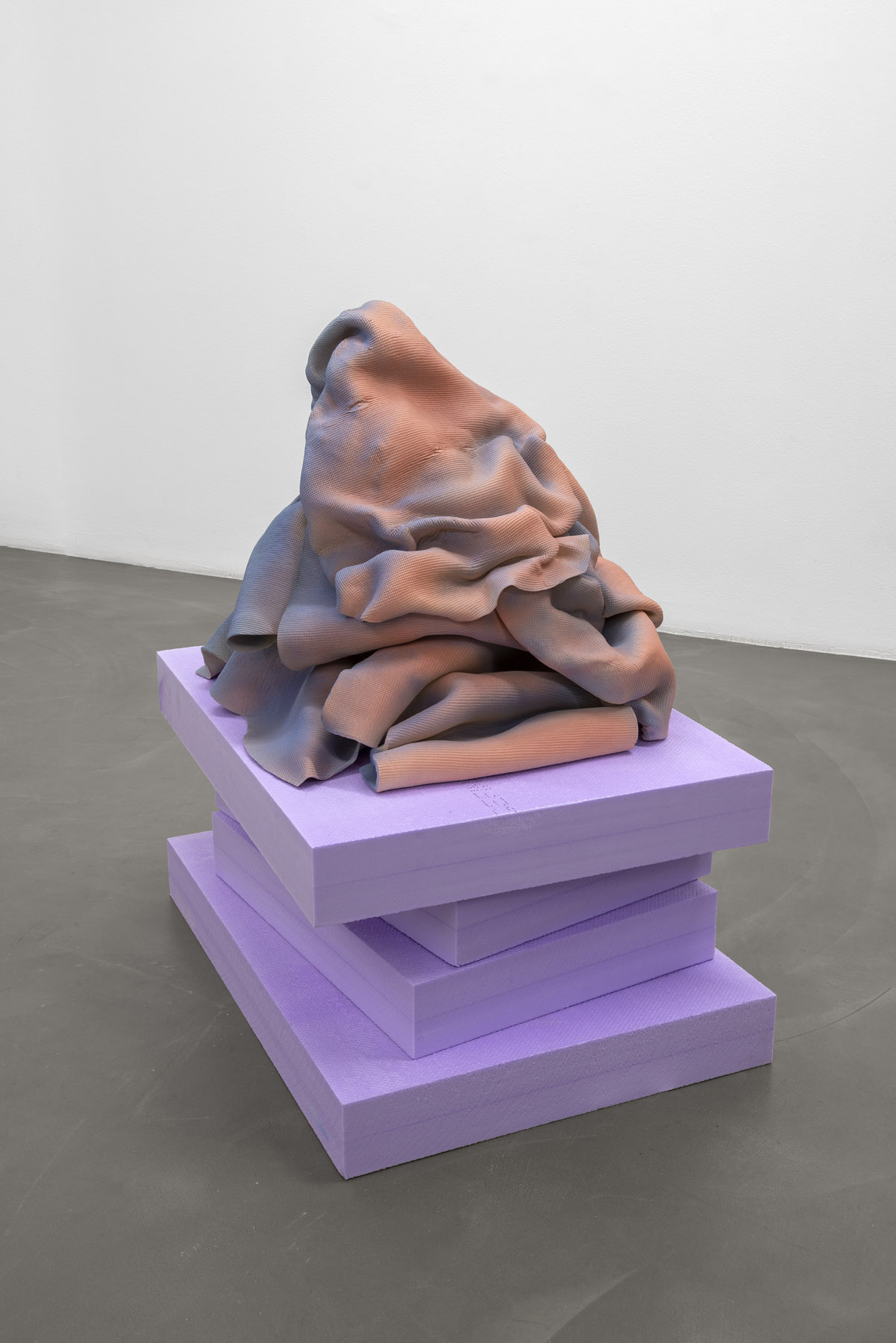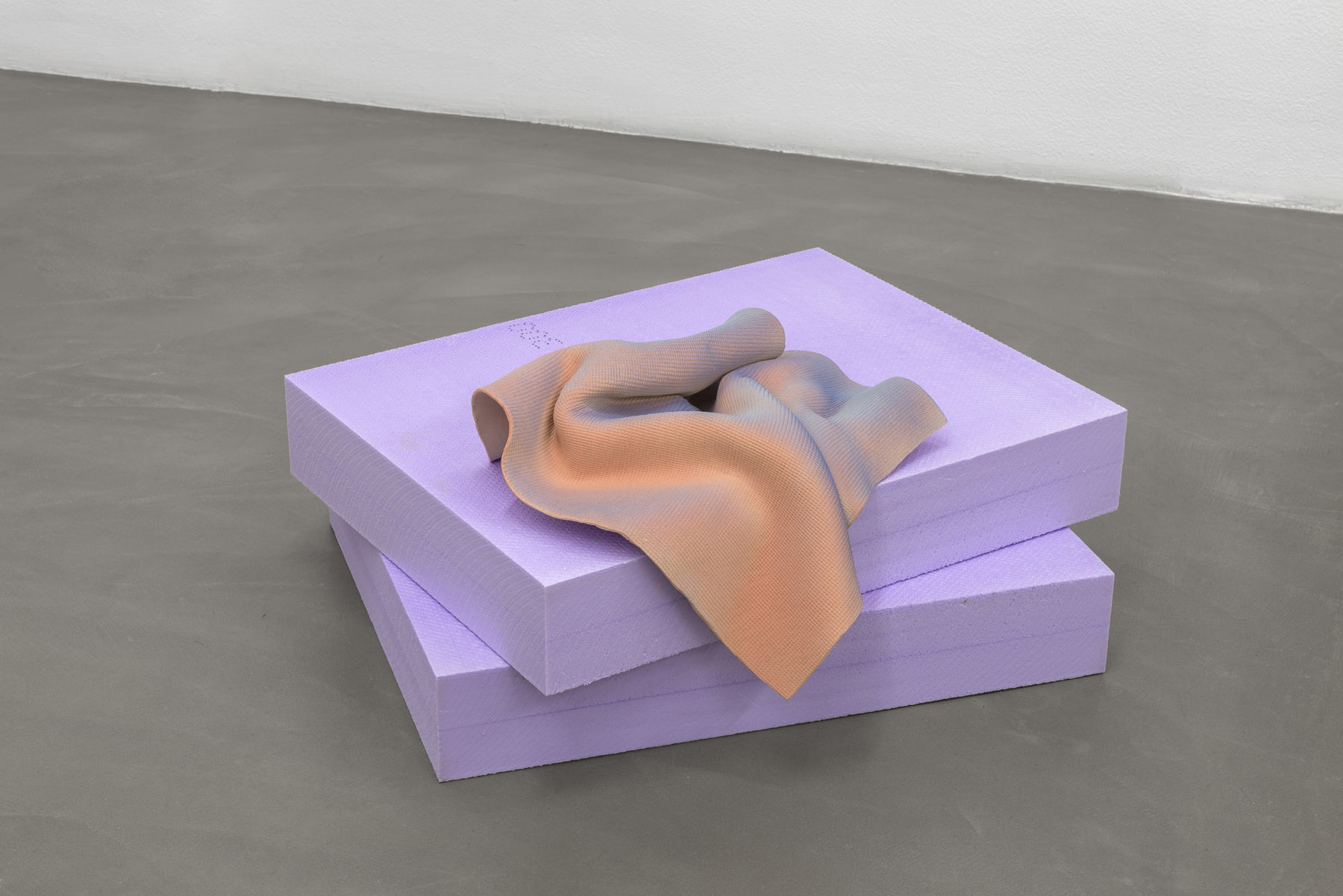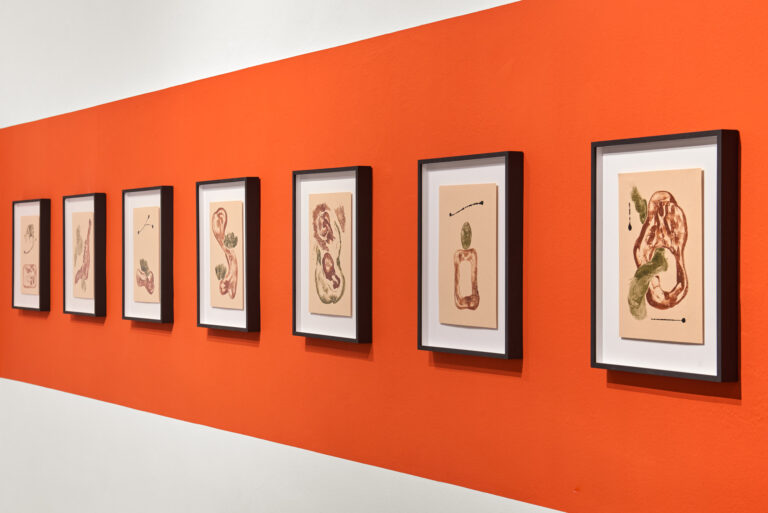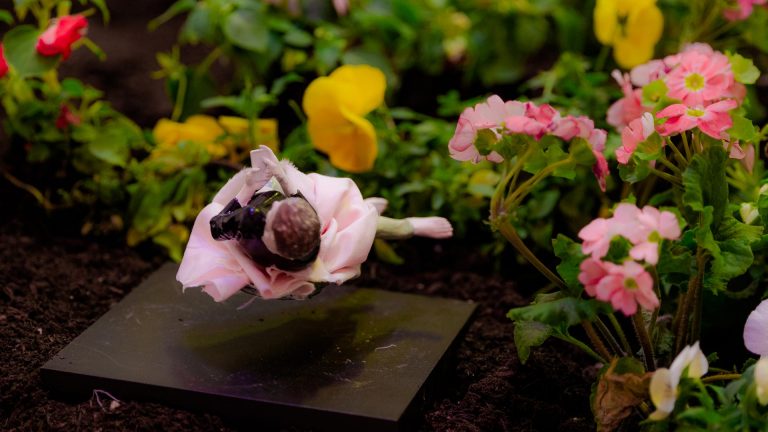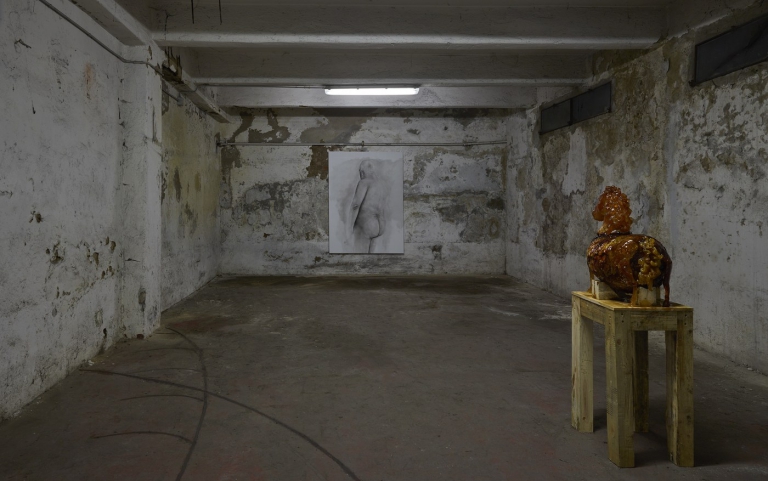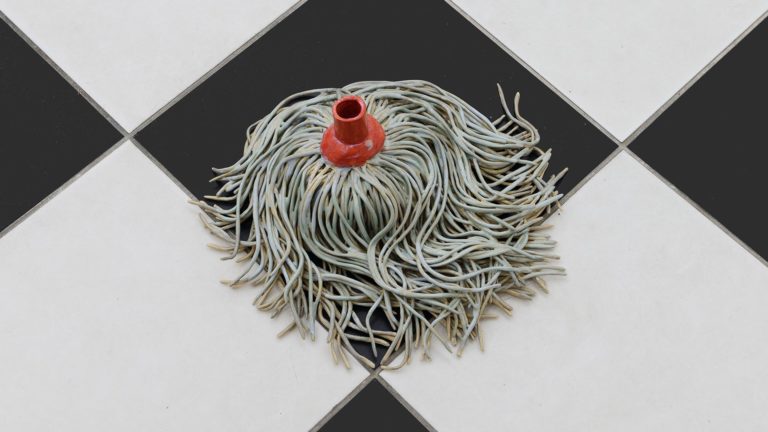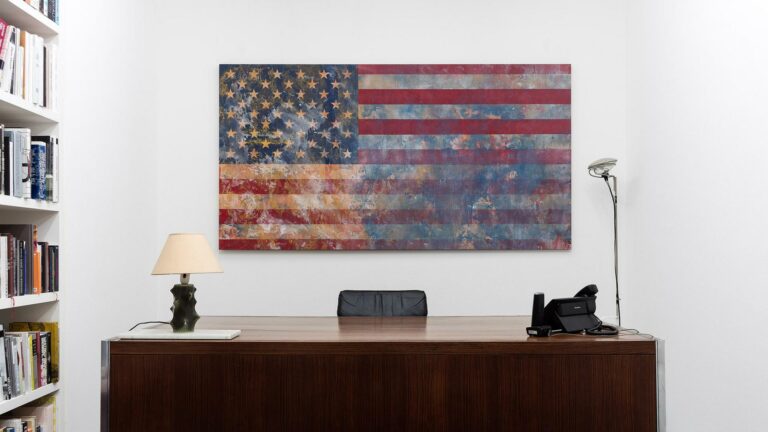Artists: Igor Hosnedl, Vera Kox
Exhibition title: In conversation chapter #2
Curated by: Domenico de Chirico
Venue: RIBOT, Milan, Italy
Date: September 30, 2020 – January 30, 2021
Photography: all images copyright and courtesy of the artists and RIBOT
“The death of another man singles me out and calls me into question, as though I had become, for my potential indifference, the accomplice of this death, invisible to the other who exhibits himself to you; and as though, even before being destined for it, I had to answer for the death of the other person: as though I had not to leave him alone in his mortal loneliness.”
E. Lévinas-A. Peperzak, Ethics as First Philosophy (1989), It. trans. F. Ciaramelli, Guerini and Associati, Milan 2001, III, 4, p. 56.)
From the very beginning, and according to the plurality of modes that encapsulates it, the term dialogue (from the Latin dialŏgus, in ancient Greek διάλογος, derived from διαλέγοµαι “to converse, talk with”, composed from dià, “by way of” and Logos, “discourse”) indicates the mainly verbal comparison, in the sense of a procedure for all-round research, conducted between two or more interlocutors, and is understood as a tool for expressing heterogeneous feelings, the view points of each of the involved parts, and for the discussion of ideas that are not necessarily opposed.
Dialogical interaction, here understood as a tool for the expositive strategy between two sides, should certainly be understood, in its most intrinsic meaning, as a moment of receptiveness, the freedom for reciprocal change, the respect and acceptance of the other. In the phenomenology of the French intellectual Emmanuel Lévinas, for example, dialogue, which involves human beings who have ended up in a search for a non-terminable truth, becomes the tool of an intentional conscience that incessantly tends towards the infinite and is strongly connoted by the presence of sensitivity and the wish to reveal the invisible. Conversation, as a synonym of dialogue, is articulated by two aspects: first that of receptiveness, in the sense of the beginning of the conversation itself, the typical mechanism of a conversational analysis based on the notorious adjacent couples, otherwise known as action and reaction. Conversation can certainly be considered the prototypical form of face-to-face dialogue and, in particular, with dialogue you do, in fact, share two central traits of interactivity and intentionality. And as in each linguistic production, the various forms of conversation are strongly influenced by the context. A dialectic of an essentially aesthetic kind is affected by all these characteristic aspects of the dialogue and emphasises them by pushing them to the extreme limits, making clear a continual search for something unsaid that is said between structural leaps and visual allusions in an infinite game that drowns the bases in the articulated artistic research of the two interlocutors.
On the one hand, in the words of Sigmund Freud, “Creativity is an attempt to resolve a conflict generated by unexpressed biological impulses, such that unfulfilled desires are the driving force of the imagination, and they fuel our dreams and daydreams”; this is the indisputable source of the art of Igor Hosnedl, useful for constructing a language that becomes increasingly personal through the habit of constantly drawing. Furthermore, this technique allows him to approach automatic writing and to natural, instinctive inspiration, and thus to live analytically in an antithetic sine qua non, held in balance between the rational and the irrational. His creative process sees Hosnedl as the protagonist of a constant soliloquy, and such an imaginative and repetitive process is rooted in the construction of a pictorial space. Hosnedl is indubitably linked to pre-established classical themes such as still-life and landscape painting, elements that allow him to sensitively celebrate his ancestral culture with all the characteristics that have always distinguished it;
on the other hand, Vera Kox’s intrinsic interest in sculpture can be traced back to the landscapes of the industrial excavations of her place of origin, Esch/Alzette in Luxembourg, where the former iron mines that surround the city present the scenario of a nature marked by human interference. Translated into fragmented material compositions of sensual folds and eclectic colours, Kox does not exclude all epistemological, ontological, evaluative, or normative characteristics related to such a proscenium. Responding to the formal and compositional specificities of the material, Kox’s practice presents a symbiotic relationship between new as well as pre-historic materials to manifest contemporary fossils and reliquaries of our modern, materialistic reality. Irony and pleasure become tools of choice in this discerning intervention, interrupting the austerity of environmental crisis and consumeristic regime. Her work draws on anthropocenic geographies to elucidate the persistent desire for an authentic reconciliation between human interests and the need to extend the moral community across the holistic ecosystem.
Igor Hosnedl (Uherské Hradiště, 1988, lives and works in Berlin). He studied at Academy of fine arts, Prague. His solo and group shows were held at: FAIT Gallery, Brno, 2019; EIGEN+ART Lab, Berlin, 2019; Downs & Ross, New York, 2018; Horizont Gallery, Budapest, 2018, 2016. His works are present in the Collection of the Museum of Decorative Arts in Prague.
Vera Kox (Frankfurt/Main, 1984, lives and works in Berlin and Luxembourg). She studied at Goldsmiths College, London and at University College for the Creative Arts, Canterbury. Her work has been shown at (selection): KINDL – Centre for Contemporary Art, Berlin, 2020; Galerie 22,48m2, Paris, 2019; Exgirlfriend, Berlin, 2019, 2018; KLEMM’S, Berlin, 2018; Galleri Opdahl, Berlin, 2018, 2016, 2013, 2012; Mudam, Luxembourg, 2017; RIBOT, Milan, 2016; MRAC, Sérignan, 2016; Künstlerhaus Bethanien, Berlin, 2013; Casino – Forum d’Art Contemporain, Luxembourg, 2012. She has been a resident at Cité internationale des arts, Paris, 2019; Seoul Art Space Geumcheon, Seoul, 2015; Künstlerhaus Bethanien, Berlin, 2013.






